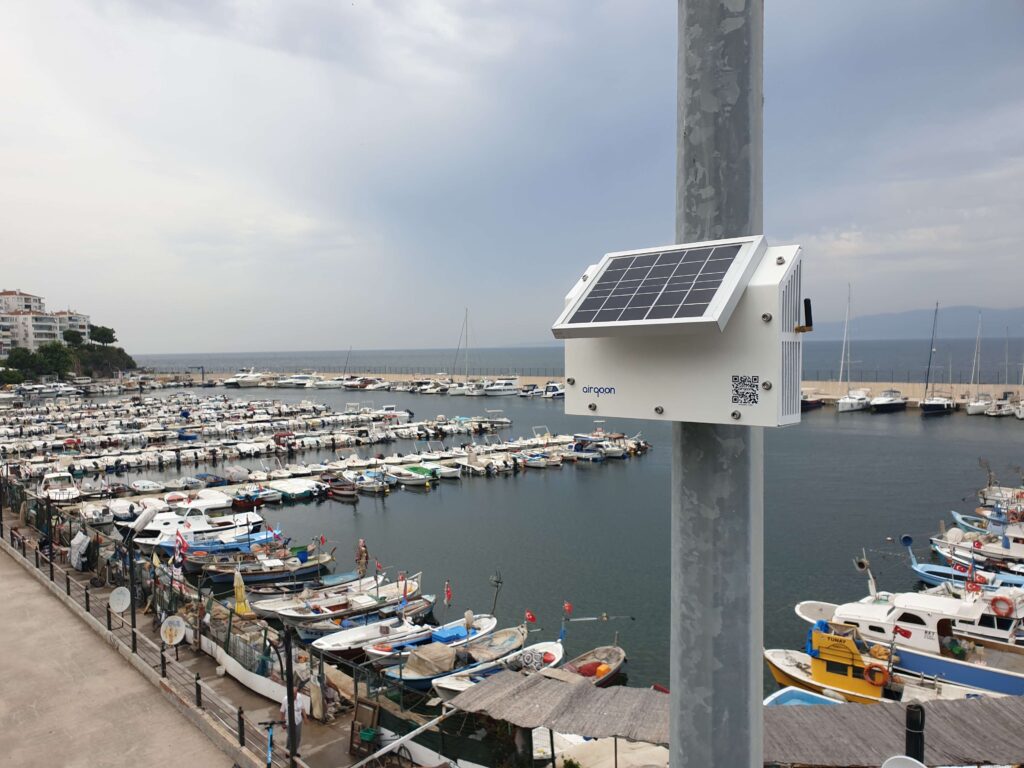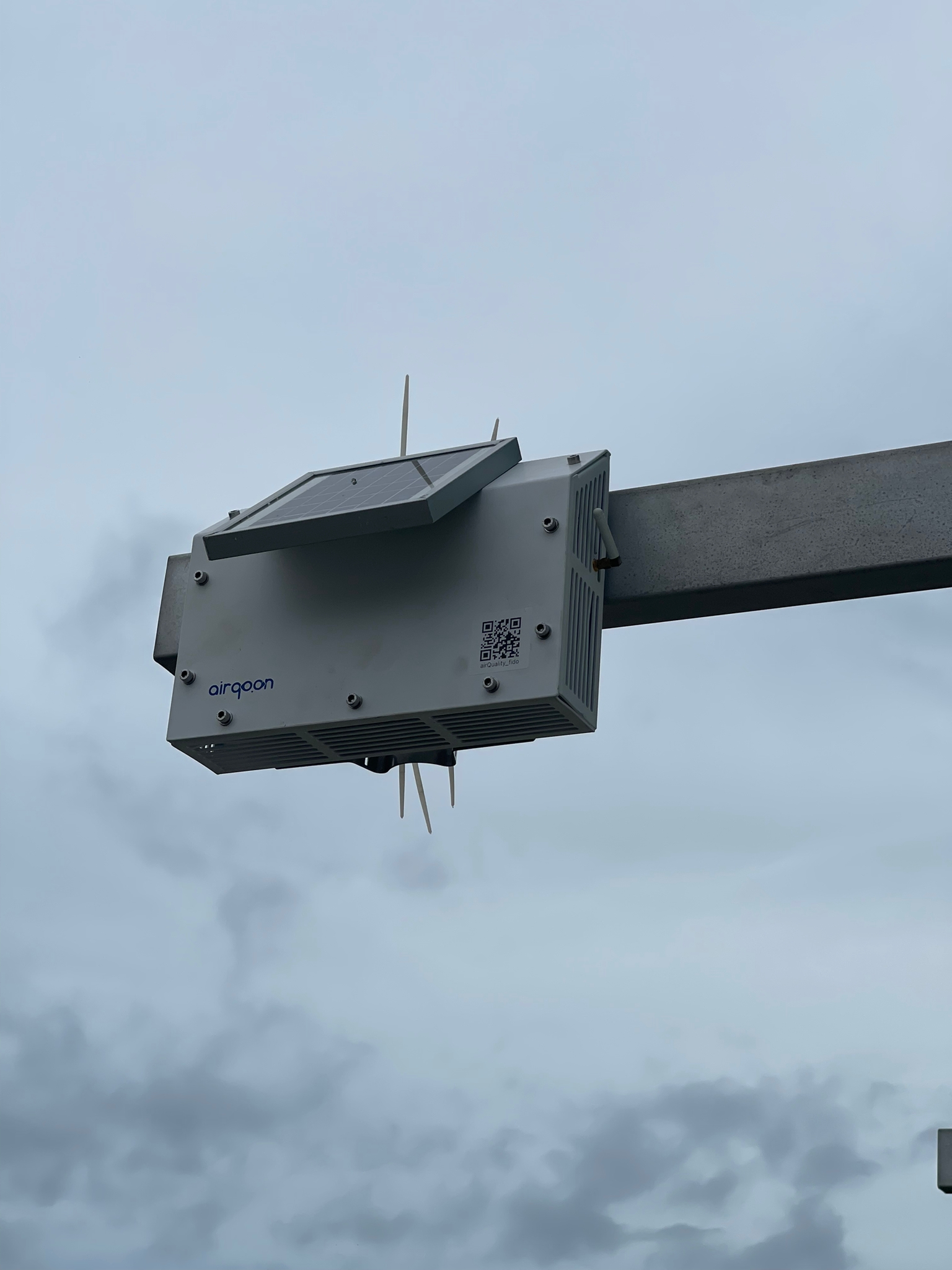Air pollution has become one of the most significant environmental and public health issues, silently affecting our lives as a consequence of modern urbanization. Even though people cannot see the air they breathe, millions around the world live under the influence of dangerous pollutants every day. This invisible threat brings about numerous problems, ranging from premature deaths and chronic diseases to economic losses and a decline in quality of life. However, the first step in combating air pollution is to be able to see it clearly.

Why Is Air Quality Monitoring So Important?
Air quality monitoring serves as a critical infrastructure to protect the health of cities and communities. Without an effective monitoring system, identifying pollution sources, detecting problem areas, and making accurate interventions becomes nearly impossible. Yet these monitoring systems are not only a scientific necessity, but also a social responsibility and a political obligation.
Recent health research has shown that air pollution can have serious health effects even at much lower levels than previously thought. In 2021, the World Health Organization (WHO) updated its air quality guidelines, reducing limit values to nearly half of the previous levels. This indicates that what was once considered “safe” is no longer sufficient and that much more sensitive monitoring systems are now required.
Changing Policies: Stricter Standards, More Comprehensive Monitoring Requirements
Policy changes at global and national levels are making the evolution of air quality monitoring systems mandatory. Especially in the past five years:
- In 2021, WHO reduced the annual average limit for PM2.5 from 10 μg/m³ to 5 μg/m³ in its updated guidelines.
- The European Green Deal aims to align EU standards with WHO guidelines by 2030.
- Many countries are not only lowering limit values but also implementing new regulations that require expanding measurement networks and increasing data transparency.
- The “Right to Clean Air” has started to be legally recognized in many countries, placing much stricter monitoring and reporting responsibilities on local governments.
These policy shifts require not only monitoring in a few spots but tracking air quality across every corner of cities. At the same time, there is increasing pressure for the data to be real-time, transparent, and publicly accessible.

The Transformation in Air Quality Monitoring Technologies
Air quality monitoring systems are undergoing a significant transformation with advances in technology.
Traditional Systems
Fixed air quality monitoring stations, which have been used for many years, offer high accuracy but are limited in number due to their high installation and maintenance costs. The installation cost of a reference air quality station can exceed €100,000, while annual maintenance costs typically range between €15,000 and €20,000. This financial barrier means that cities often try to represent the air quality of the entire area with just a few stations.
As a result, we only get a general picture at the city scale, but we miss out on variations at the neighborhood and street level. However, research shows that air quality can vary significantly even from one street to another within the same neighborhood.
Next-Generation Monitoring Systems
In recent years, low-cost air quality sensors have come to the forefront. These sensors can measure air quality in real time even at the neighborhood level, allowing us to create more detailed, time- and location-sensitive air maps. Advances in sensor technologies-particularly in electrochemical sensors, NDIR (Non-Dispersive Infrared) technologies, and nephelometric measurement methods-have resulted in major improvements in both cost-efficiency and accuracy.
These new-generation sensors can be installed at a fraction of the cost of traditional systems and require much less maintenance. Additionally, thanks to their compact size and low energy consumption, they can operate on solar power, making it possible to integrate them into urban furniture, public transportation vehicles, and even bicycles. However, the greatest challenge with these sensors lies in calibration. Compared to reference-grade instruments, these sensors tend to drift over time, leading to a gradual loss of accuracy.
Why Integration? The Limits of Standalone Solutions
Air pollution is inherently a complex, multidimensional, and dynamic phenomenon. In a single city, dozens of different pollution sources can be active at the same time—traffic, industrial facilities, heating systems, construction activities, and natural sources. Each of these sources emits different pollutants, operates at different times, and is influenced by varying meteorological conditions.
Given this complexity, monitoring approaches based on a single technology often fall short. This is precisely where the integrated approach becomes essential. The technological transformation in air quality monitoring is not about one technology replacing another, but about integrating different technologies to create more robust, smarter, and more effective solutions. Hybrid systems that combine the strengths of various technologies while compensating for their weaknesses are creating a new paradigm in the field of air quality monitoring.

Airqoon’s Innovative Approach
Airqoon is an innovative air quality monitoring system designed precisely to fill this critical gap. Our cost-effective sensor network, compact and self-sufficient design, and advanced data analytics enable cities to map air quality at the neighborhood level.
Airqoon offers an integrated ecosystem that overcomes the challenges in the field of air quality monitoring:
1. Innovative Sensor Technology
Our sensor units have a solar-powered design that can be installed in under five minutes-eliminating dependence on infrastructure and enabling uninterrupted monitoring even under challenging geographic conditions.
Our technological advantage begins with the precision of our sensors. By utilizing electrochemical, NDIR, and nephelometric technologies, we accurately measure critical pollutants. Our sensors undergo regular co-location testing with reference stations. During these tests, discrepancies between devices measuring the same air mass are analyzed, and correction algorithms are updated accordingly. Machine learning algorithms continuously analyze sensor behavior, automatically updating calibration parameters by accounting for sensor aging, seasonal variations, and environmental factors.
2. LensAI: AI-Powered Data Analytics
What truly sets Airqoon apart is the value we generate beyond data collection. Our LensAI artificial intelligence platform processes raw data to:
- Identify pollution sources
- Analyze seasonal and daily patterns
- Detect pollution hotspots
- Propose solution-oriented action plans
This platform detects guideline exceedances based on WHO and national standards, identifying which regions require urgent intervention. LensAI takes this a step further by uncovering pollution sources and temporal patterns-providing critical insights for solution strategies.
3. Data Transparency and Accessibility
Our commitment to data transparency is realized through public maps and dashboards. This platform empowers citizens about air quality while offering local governments the opportunity to enhance public engagement. Our API integrations and user-friendly interfaces ensure seamless integration of our data into existing systems.
Airqoon’s Impact Model
Airqoon’s impact model is a continuous loop from data collection to information generation to action. For cities and businesses, this means more effective resource allocation, better-informed policy decisions, and most importantly, healthier communities.
Its tangible benefits include:
- For Local Governments: Measuring policy effectiveness, optimizing resource allocation, increasing citizen participation
- For Businesses: Monitoring environmental impacts, ensuring regulatory compliance, contributing to sustainability goals
- For Citizens: Planning daily activities, reducing health risks, increasing environmental awareness
Looking Ahead: From Data to Action
The true value of our air quality data lies in the change it can create. At Airqoon, our mission is not just to collect data, but to transform it into meaningful action.
Air pollution is no longer an invisible threat limited to major cities-it affects all of our living environments. But here’s the good news: thanks to technology, it’s now possible to make this threat visible. Innovative solutions like Airqoon are helping cities and communities take steps toward a healthier future.
Our solution transforms complex environmental data into accessible and actionable insights, empowering local governments, businesses, and communities to understand, manage, and reduce air pollution. This transformation is not only essential for a cleaner environment, but also critical for enabling millions of people to live healthier lives.









